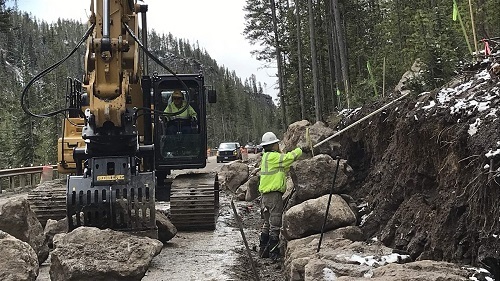
It’s a safe bet that America’s national parks would never have become the popular attractions they are today without extensive, reliable transportation to carry visitors to, from and through the parks. From the railroads built in the late 1800s and early 1900s to serve the first western parks to the early carriage paths and roads that followed, transportation infrastructure is vital to visitors’ access and enjoyment of these significant sites. Today the National Park Service (NPS) maintains more than 5,000 miles of paved roads, as well as tunnels and bridges. Many of these roads are showing their age, and park managers are grappling with a backlog of transportation-related repairs—part of $12 billion in deferred maintenance that is challenging NPS sites across the country.
Many park roads were constructed decades ago when cars were smaller; as a result, routes often are narrow and lack shoulders—an issue for today’s larger cars and recreational vehicles. Also, increased visits at many park sites lead to overflowing parking lots, forcing visitors to park on roadsides, which in turn damages natural resources and can be a safety hazard. Increased visits combined with the aging of facilities and inconsistent funding have made it difficult for NPS to keep up with needed repairs; the agency has an estimated $12 billion maintenance backlog. Transportation-related assets (roads, bridges, tunnels and parking lots) account for half of that total ($6.2 billion). Of those transportation needs, repairs totaling $4.8 billion are categorized as high or highest priority. Last year, agency application requests for funding for “megaprojects” (transportation maintenance repairs that are well above core agency funding) amounted to nearly $2 billion, far exceeding the $325 million appropriated for these projects.
The NPS repair backlog directly affects visitors by, for example, limiting or cutting off access to historic sites, wildlife viewing areas, campgrounds, and hiking trails. This could hurt the local jurisdictions that depend on park visitors. In 2018, tourists spent more than $20 billion in gateway communities, supporting more than 329,000 jobs and generating more than $40 billion in economic output.
Read the full article from Pew Charitable Trusts here.




